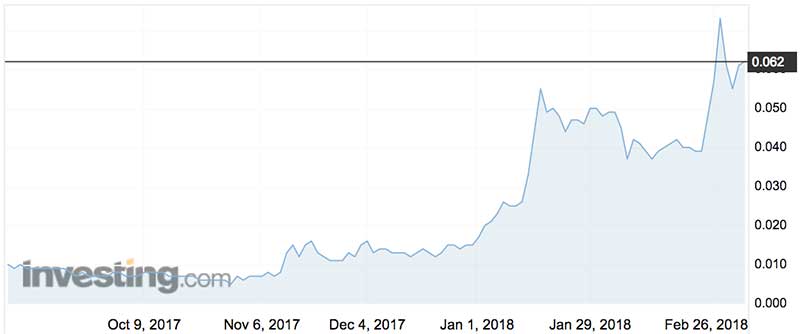Vanadium and gold prospects drive up King River Copper
Mining
Mining
Geology students have been analysing the Speewah Dome in the far north of WA for decades.
But it’s taken the electric car revolution, a whiff of gold, and a 1000 per cent share price rise by the company controlling the unique structure for investors to take a fresh look.
King River Copper — which was trading at 0.5 cents in late October — rocketed to a four-year high of 7.4c last week before easing back to around 6.2c thanks to a combination of factors, all related to exploration in the Kimberley region.
Gold was the first shot fired in the re-awakening of King River — a company effectively controlled by its biggest shareholder and former Perth stockbroker, Tony Barton.
After the announcement of what looks to be a significant gold discovery at Mt Remarkable, about 80km south of the Speewah Dome, a series of reports about the Dome itself kept investors interested.
Over a four-week period starting in late January, King River delivered upbeat reports on the titanium dioxide potential of the rocks at Speewah, the fluorite potential, and the vanadium potential.
The vanadium was of greatest interest because it is a material hailed as the next battery metal after lithium and cobalt.

How one slice of Australia could yield such a diverse range of elements requires a little explaining.
It wasn’t that long ago that King River (then called NiPlats) reported the discovery of platinum group metals at the Speewah project, followed by promising indications of copper – hence the adoption of the new name of King River Copper.
Platinum group metals (PGMs) include platinum, palladium, ruthenium, rhodium, osmium and iridium.
The Speewah Dome is an ancient volcanic structure comprising multiple lava flows which have left behind — according to a model constructed by King River — zones enriched with elements such as gold, silver, copper, vanadium, bismuth, fluorite, lead, zinc, antimony and mercury.
That cocktail of metals sounds enticing and has certainly excited geologists over the past 50 years.
But finding enough of one (or two) metals to declare Speewah Dome a commercial proposition has proved difficult.
Platinum was favoured in 2010 because the price was more than $US1700 an ounce. Today it’s $US990 — and apart from the drop in price, platinum and its sister metal palladium require a significant amount of processing.
Copper looked good when the price was above $US4 a pound. But the metals now seen as most likely to justify development of a mine at Speewah are fluorite, titanium dioxide and vanadium.
Gold is the latest interest
Gold, however, is where the latest interest in King River Copper started with drilling at the Mt Remarkable project returning assays up to 37.6 grams a tonne over 6 metres, with a 1m core grading 90.7g/t.
That drilling result, reported on November 10 last year, helped get King River’s share price moving.
It ran from 0.8c to 2c by January 3 when the company earned its first “speeding ticket” from exchange regulators, which gave the company an opportunity to remind the market of its Mt Remarkable discovery.
Since that gold-led share-price revival, King River has hit the stock exchange with a series of updated reports on work at the Speewah Dome, including:
Each of those reports, coming on top of the Mt Remarkable gold results, has help maintain interest in King River shares.
The stock has moved from 2c on the day of the ASX price inquiry to 3.3c by January 12, then to 5.5c by January 16 and on to 7c on February 27 — the day the vanadium report was released.
King River’s aim with its vanadium research work is to help find a commercial route for the production of material wanted in the production of electricity-storage batteries.
“The major objective of the concept study is to identify a base framework for a new scoping study into the production and marketability of vanadium electrolyte products used in vanadium flow batteries,” the company said.
King River rates its vanadium project as one of the best in Australia — where a number of vanadium deposits have made a return thanks to growing interest in the metal as a rival to lithium ion batteries.
But whether it’s the promise of finally cracking the Speewah code and finding a way to monetise a complex geological structure — or the simplicity of the gold at Mt Remarkable — is uncertain.
Perhaps the best way to look at King River Copper is as a company which has four metals emerging as potential winners, vanadium, titanium, fluorite and gold, with copper a memory of past attempts to develop the Speewah Dome — while hoping that this time it will be different.